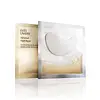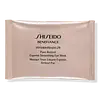What's inside
What's inside
 Key Ingredients
Key Ingredients

 Benefits
Benefits

 Concerns
Concerns

 Ingredients Side-by-side
Ingredients Side-by-side

Water
Skin ConditioningMethyl Gluceth-20
HumectantPEG-75
HumectantBis-PEG-18 Methyl Ether Dimethyl Silane
EmollientButylene Glycol
HumectantPropanediol
SolventGlycereth-26
HumectantCladosiphon Okamuranus Extract
Skin ConditioningSilybum Marianum Extract
Skin ConditioningEchinacea Purpurea Extract
MoisturisingGarcinia Mangostana Peel Extract
Skin ConditioningAnthemis Nobilis Flower Extract
MaskingCaffeine
Skin ConditioningCoffea Arabica Seed Extract
MaskingArtemia Extract
Skin ConditioningBetula Alba Bud Extract
Skin ConditioningPoria Cocos Sclerotium Extract
AstringentHydrolyzed Rice Extract
Skin ConditioningCamelina Sativa Seed Oil
Skin ConditioningAlgae Extract
EmollientLactobacillus Ferment
Skin ConditioningHydrolyzed Algin
Squalane
EmollientC12-15 Alkyl Benzoate
AntimicrobialYeast Extract
Skin ConditioningCaprylyl Glycol
EmollientTocopheryl Acetate
AntioxidantPEG-8 Glyceryl Isostearate
EmollientPolysorbate 20
EmulsifyingGlycine
BufferingCarbomer
Emulsion StabilisingSodium Hyaluronate
HumectantDextrin
AbsorbentXanthan Gum
EmulsifyingSodium Hydroxide
BufferingLecithin
EmollientTriethoxycaprylylsilane
Polyhydroxystearic Acid
EmulsifyingTrisodium EDTA
Phenoxyethanol
PreservativeCI 77491
Cosmetic ColorantWater, Methyl Gluceth-20, PEG-75, Bis-PEG-18 Methyl Ether Dimethyl Silane, Butylene Glycol, Propanediol, Glycereth-26, Cladosiphon Okamuranus Extract, Silybum Marianum Extract, Echinacea Purpurea Extract, Garcinia Mangostana Peel Extract, Anthemis Nobilis Flower Extract, Caffeine, Coffea Arabica Seed Extract, Artemia Extract, Betula Alba Bud Extract, Poria Cocos Sclerotium Extract, Hydrolyzed Rice Extract, Camelina Sativa Seed Oil, Algae Extract, Lactobacillus Ferment, Hydrolyzed Algin, Squalane, C12-15 Alkyl Benzoate, Yeast Extract, Caprylyl Glycol, Tocopheryl Acetate, PEG-8 Glyceryl Isostearate, Polysorbate 20, Glycine, Carbomer, Sodium Hyaluronate, Dextrin, Xanthan Gum, Sodium Hydroxide, Lecithin, Triethoxycaprylylsilane, Polyhydroxystearic Acid, Trisodium EDTA, Phenoxyethanol, CI 77491
Water
Skin ConditioningButylene Glycol
HumectantPentaerythrityl Tetraethylhexanoate
EmollientDiphenylsiloxy Phenyl Trimethicone
Skin ConditioningGlycerin
HumectantDipropylene Glycol
HumectantPEG-60 Hydrogenated Castor Oil
EmulsifyingTocopheryl Acetate
AntioxidantPhenoxyethanol
PreservativeAlcohol
AntimicrobialCarbomer
Emulsion StabilisingSodium Citrate
BufferingParfum
MaskingBHT
AntioxidantSqualane
EmollientXanthan Gum
EmulsifyingPotassium Hydroxide
BufferingRetinol
Skin ConditioningPolysorbate 20
EmulsifyingCitric Acid
BufferingTrisodium EDTA
Magnesium Ascorbyl Phosphate
AntioxidantButylphenyl Methylpropional
PerfumingSapindus Mukorossi Peel Extract
Skin ConditioningLimonene
PerfumingLinalool
PerfumingUncaria Gambir Extract
AstringentCitronellol
PerfumingAlpha-Isomethyl Ionone
PerfumingPaeonia Suffruticosa Root Extract
Skin ProtectingGeraniol
PerfumingBenzyl Benzoate
AntimicrobialSodium Acetylated Hyaluronate
HumectantHydroxyproline
Skin ConditioningChlorella Vulgaris Extract
Skin ConditioningCI 75130
Cosmetic ColorantWater, Butylene Glycol, Pentaerythrityl Tetraethylhexanoate, Diphenylsiloxy Phenyl Trimethicone, Glycerin, Dipropylene Glycol, PEG-60 Hydrogenated Castor Oil, Tocopheryl Acetate, Phenoxyethanol, Alcohol, Carbomer, Sodium Citrate, Parfum, BHT, Squalane, Xanthan Gum, Potassium Hydroxide, Retinol, Polysorbate 20, Citric Acid, Trisodium EDTA, Magnesium Ascorbyl Phosphate, Butylphenyl Methylpropional, Sapindus Mukorossi Peel Extract, Limonene, Linalool, Uncaria Gambir Extract, Citronellol, Alpha-Isomethyl Ionone, Paeonia Suffruticosa Root Extract, Geraniol, Benzyl Benzoate, Sodium Acetylated Hyaluronate, Hydroxyproline, Chlorella Vulgaris Extract, CI 75130
Alternatives
Ingredients Explained
These ingredients are found in both products.
Ingredients higher up in an ingredient list are typically present in a larger amount.
Butylene Glycol (or BG) is used within cosmetic products for a few different reasons:
Overall, Butylene Glycol is a safe and well-rounded ingredient that works well with other ingredients.
Though this ingredient works well with most skin types, some people with sensitive skin may experience a reaction such as allergic rashes, closed comedones, or itchiness.
Learn more about Butylene GlycolCarbomer is a polymer of acrylic acid. Its main role is to create a gel consistency.
A high amount of carbomer can cause pilling or balling up of products. Don't worry, most products contain 1% or less of carbomer.
Phenoxyethanol is a preservative that has germicide, antimicrobial, and aromatic properties. Studies show that phenoxyethanol can prevent microbial growth. By itself, it has a scent that is similar to that of a rose.
It's often used in formulations along with Caprylyl Glycol to preserve the shelf life of products.
Polysorbate 20 is made by combining ethoxylation of sorbitan, ethylene oxide, and lauric acid. It is a mild cleansing agent, surfactant, and emulsifier.
As a surfactant, it helps collect dirt and oils for washing. Emulsifiers prevent oils and water from separating.
Polysorbate 20 also adds scent to a product. Since it is made using sorbitol, it has a sweet scent. Sorbitol can also be found in fruits such as apples and peaches.
The lauric acid used to create Polysorbate 20 is often derived from coconuts.
Polysorbate 20 may not be fungal acne safe.
Learn more about Polysorbate 20Squalane is an emollient that helps the skin hold onto moisture. It's an oily liquid that occurs naturally in certain types of fish and plant oils.
Because squalane boosts hydration in the skin, it also comes with plenty of benefits: it is an antioxidant and can help fight free radicals and skin damage. Squalane is also found to have a detoxifying effect when applied.
Squalane comes from squalene, which occurs naturally within the sebum of our skin. It is one of the oils our skin produces to keep itself hydrated. Squalane is the hydrogenated version of squalene and has a longer shelf life.
Research shows that squalane is non-irritating (even at 100% concentration).
In general, it's a fantastic ingredient. It does a great job at hydrating the skin, and it's suitable for those with sensitive skin.
The source of squalane may impact malassezia / fungal acne. This is because olive oil derived squalane can contain impurities such as fatty acids and plant waxes. Sugarcane derived squalane is recommended for anyone with malassezia concerns.
Is squalane vegan?
This depends on the source. Squalane can be derived from both plants and animals. Most squalane used in skincare comes from plants.
Please note: the source of squalane is only known if disclosed by the brand. We recommend reaching out to the brand if you have any questions about their squalane.
Read more about squalene with an "e".
Is squalane an oil?
Squalane is often called an oil, but it’s technically not; it’s a hydrocarbon, meaning it’s only made of carbon and hydrogen, unlike true oils which are triglycerides made of fatty acids and glycerol.
The term “oil-free” isn’t regulated, so companies can define it however they want. Some exclude all oils, while others just avoid mineral oil or comedogenic oils.
While some people avoid oils thinking they cause breakouts, the right kind of oil (or oil-like ingredient like squalane) can actually help balance and hydrate your skin. It’s worth testing out simple oils or squalane to see what works best for your skin.
Learn more about SqualaneTocopheryl Acetate is AKA Vitamin E. It is an antioxidant and protects your skin from free radicals. Free radicals damage the skin by breaking down collagen.
One study found using Tocopheryl Acetate with Vitamin C decreased the number of sunburned cells.
Tocopheryl Acetate is commonly found in both skincare and dietary supplements.
Learn more about Tocopheryl AcetateWe don't have a description for Trisodium EDTA yet.
Water. It's the most common cosmetic ingredient of all. You'll usually see it at the top of ingredient lists, meaning that it makes up the largest part of the product.
So why is it so popular? Water most often acts as a solvent - this means that it helps dissolve other ingredients into the formulation.
You'll also recognize water as that liquid we all need to stay alive. If you see this, drink a glass of water. Stay hydrated!
Learn more about WaterXanthan gum is used as a stabilizer and thickener within cosmetic products. It helps give products a sticky, thick feeling - preventing them from being too runny.
On the technical side of things, xanthan gum is a polysaccharide - a combination consisting of multiple sugar molecules bonded together.
Xanthan gum is a pretty common and great ingredient. It is a natural, non-toxic, non-irritating ingredient that is also commonly used in food products.
Learn more about Xanthan Gum